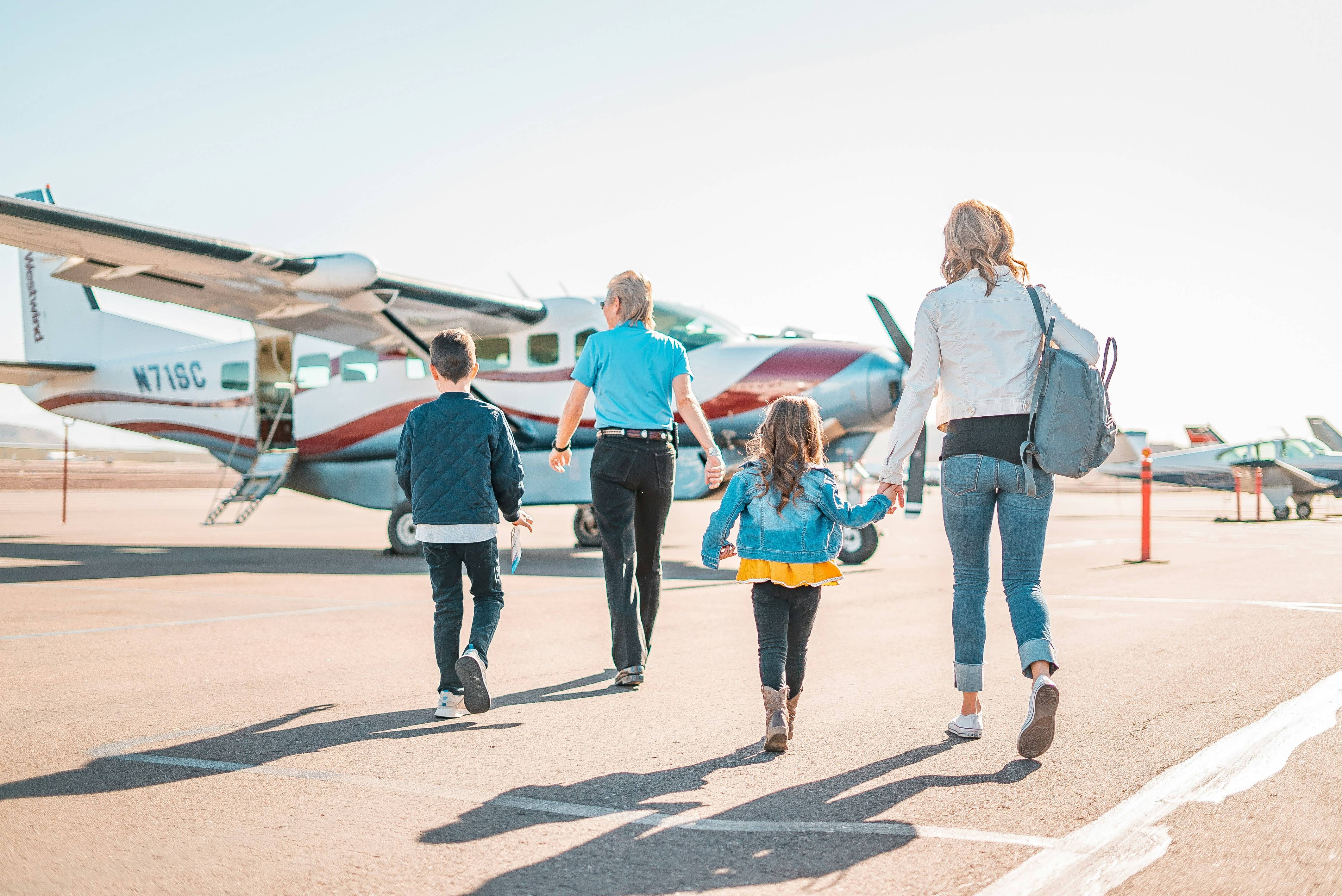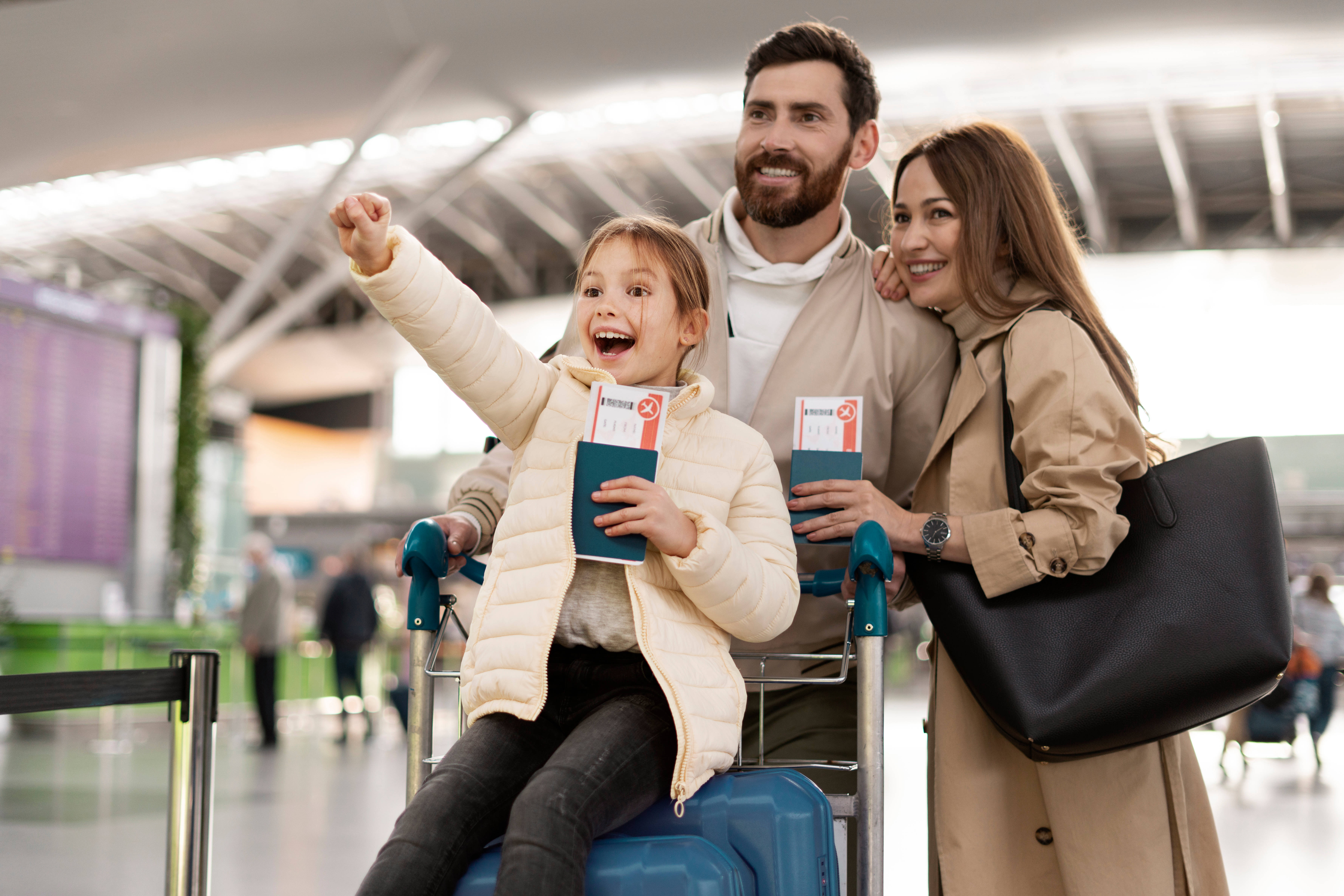Children Travel Age Requirements
Read our Trust & Transparency Statement
Key Topics:
- Age Limits of Flying with Infants & Kids
- Preparing for the Flight
- At the Airport
- During the Flight
- FAQ: Children Travel Age Requirements
Are you planning to fly with your kids anytime soon? I know from experience that flying with children can be a bit of a challenge, but with a little bit of planning, you can ensure a safer and smoother flight for everyone.
I’ve found that by knowing the age limits for flying with infants and children, I can prepare better and enjoy the travel experience with my little ones. Whether it's your first time flying with kids or you’re a seasoned traveler, these guidelines can make a big difference.
Age Limits of Flying with Infants & Kids
Understanding the age-related policies for flying with infants and children has always made my journeys smoother. Most airlines require infants to be at least seven days old for air travel, which was a relief when I first flew with my newborn. If your baby is less than 14 days old, you might need a doctor's written permission, and the infant is usually allowed on board only for emergency medical reasons or compassionate grounds.
For infants between 14 days and 1 year, they can fly free if they’re traveling on a bassinet or a parent’s lap, something I've always appreciated when trying to save on tickets. You can even request a bassinet when booking tickets online, making the process more convenient.
Lap children between 6-36 months can travel in car seats, although you have to pay full fare for the seat. I always ensure that the car seats I use are government-approved for both vehicles and aircraft, as they can be used at any stage of the flight. If the flight isn’t sold out, you might be allowed to use an empty seat for your lap child, but there’s no guarantee unless you purchase the seat. I recommend checking with your airline for special discounts for children under 2, as some airlines offer these.
VIDEO:Traveling internationally with a baby can be a daunting task, especially when it comes to ensuring you have all the necessary documents. In this video, the host breaks down the six essential documents you might need when flying with a baby or toddler, covering everything from passports to vaccination records. I remember the first time I traveled with my infant son; I thought I had everything covered, but I almost missed our flight because I didn't realize my baby needed a boarding pass. This video saved me from a lot of stress and potential mishaps. Make sure to watch it till the end to avoid any last-minute surprises and ensure a smooth journey with your little one!
For children aged 2-14 years, a full ticket is required. While this can add up, some airlines offer discounts on the full adult fare. I always check airline-specific rules and guidelines before booking to make sure I’m getting the best deal. Additionally, when flying within the United States, the FAA does not require identification for children under 18 years old traveling with a companion, provided the companion has valid identification. However, policies may vary for international travel, so it’s crucial to verify with your airline and destination country about any specific documentation required.
Preparing for the Flight
Proper preparation is key to a smoother travel experience with children. When booking tickets, I always look for flights with convenient times and fewer layovers. I’ve found that choosing flights during my kids’ nap times makes the journey much easier. I also make sure to book seats together and request any necessary items like bassinets, car seats, and special meals. It’s also a good idea to check the airline’s policies on seat selection for families to avoid any surprises.
Make sure you have all the necessary identification and documents for your children, including passports, birth certificates, and consent forms for minors. According to the TSA, while identification isn’t always required for domestic flights, international travel demands more rigorous documentation. I’ve learned the hard way that having travel insurance for children is also important, covering potential issues that may arise during the trip.
At the Airport
Navigating the airport with children can be challenging, but being prepared can make all the difference. When going through security, I always try to be as efficient as possible and know what to expect. The TSA provides resources to assist families, including the TSA Cares program, which offers additional support for travelers with children, especially those with disabilities or medical conditions. Familiarizing yourself with the screening process and packing liquids and snacks appropriately can help you avoid prohibited items.
Keeping children entertained and comfortable at the airport is crucial. I always bring toys, games, and activities to keep them occupied. Electronic devices and headphones have been lifesavers during long waits. Don’t forget to pack comfort items like blankets, pillows, and favorite toys, as well as snacks and drinks to keep them satisfied.
During the Flight
Ensuring in-flight safety for your children is a top priority. I always follow safety protocols during take-off, landing, and turbulence. Using seat belts and car seats correctly is essential for your child’s safety. The EASA recommends using a car seat or a child restraint device that is certified for aviation use, as these offer the best protection for your child during the flight.
Managing meals and snacks during the flight is also important. I always bring child-friendly snacks and meals, and request special meals from the airline if needed. It’s easier to have something on hand rather than relying on the in-flight offerings, which might not always suit your child’s preferences.
Dealing with common issues like ear pain can make the flight more comfortable for your children. I use pacifiers, chewing gum, and swallowing techniques to prevent and manage ear pain. Helping your children sleep on flights can be achieved with the right strategies, including sleep aids and routines. Sometimes a little planning can go a long way in ensuring a peaceful flight for everyone.
FAQ: Children Travel Age Requirements
Find more help here for your journey through the airport



